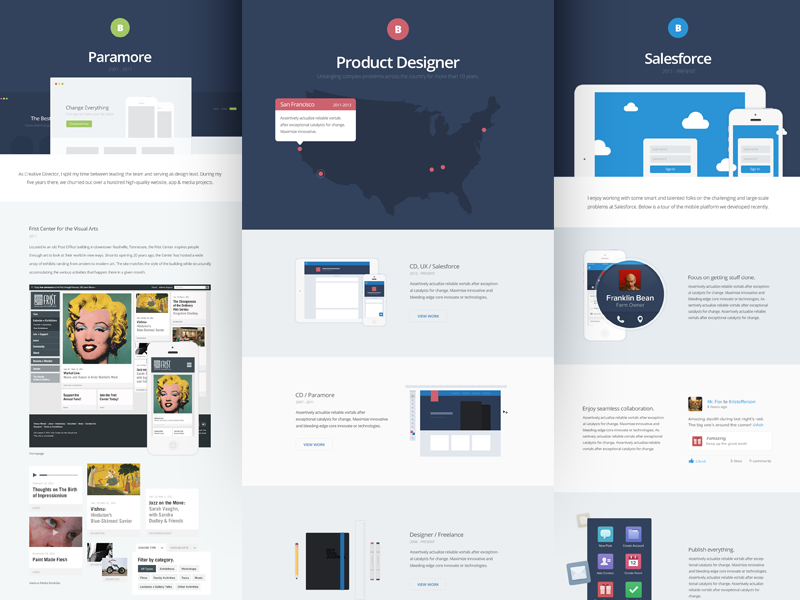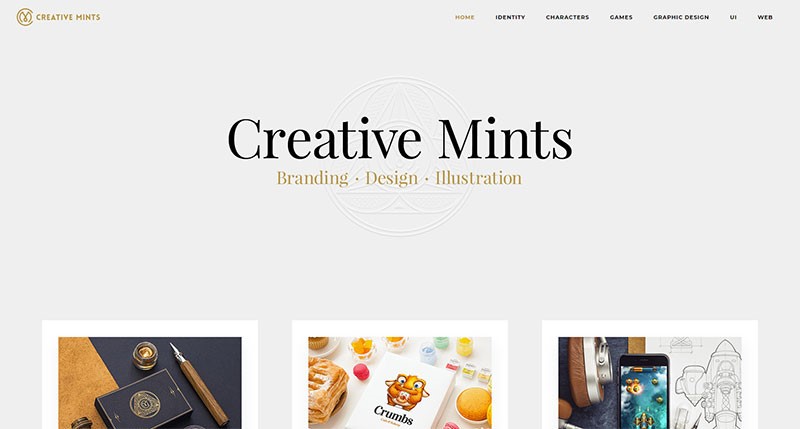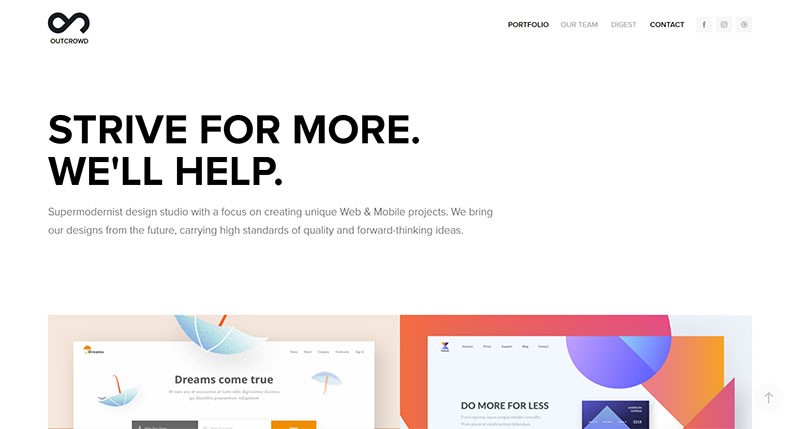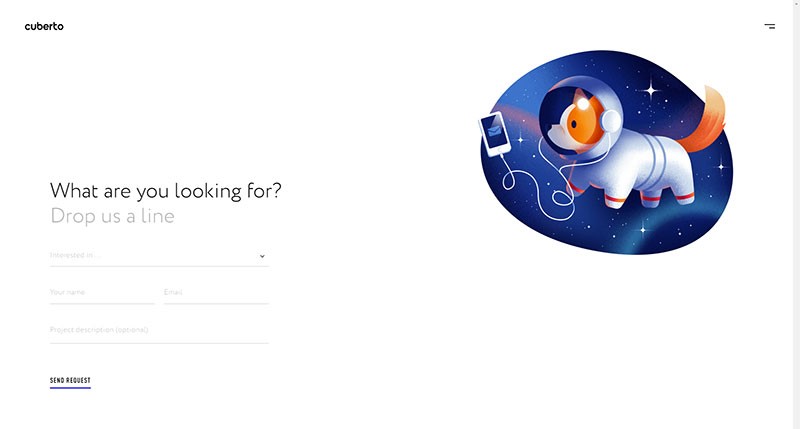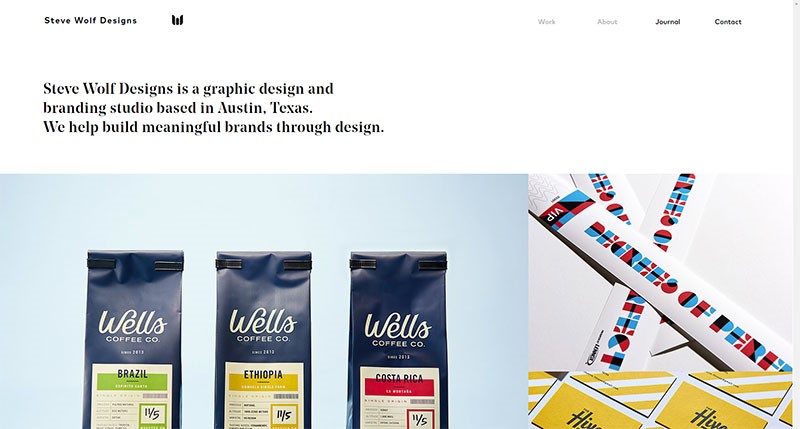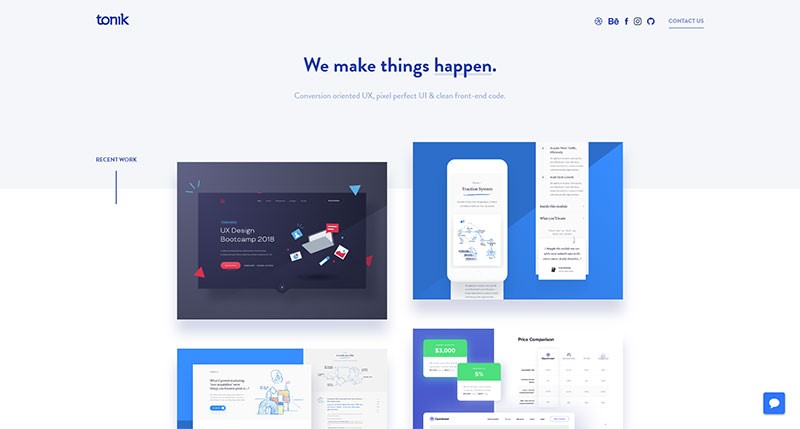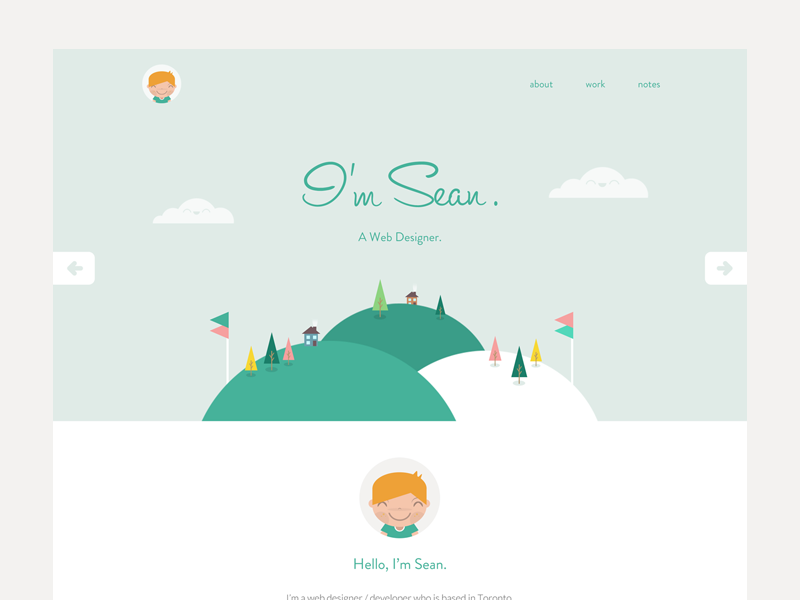If you’re a freelancer, you know your portfolio is going to be your selling point. If you are just starting out and have little work to add to your portfolio, you might wonder how you can build up your business?
It might feel like a Catch 22 situation, where lack of experience prevents you from getting a job, but you cannot get experience without finding work.
The key to breaking this cycle is to add samples to your portfolio. You will only need a few samples before you can start to market yourself to paying clients. This will enable you to launch your freelance career.
Find your place in the field
Your specialty is the area of work you would most like to be known for, even if you haven’t built up your reputation yet. The term designer is a broad title, but you might know you’d ultimately like to create websites or become an illustrator. Focusing on what you would like to do helps you to attract clients who would like your services.
When you know what interests you the most, you are able to position yourself in the marketplace.
Look at these graphic designer websites. They’re good at what they do and they showcase it well.
Knowing exactly what you want to do is the strongest advice business leaders give to blossoming entrepreneurs. Knowing what you want to do assists you with marketing your strengths and appealing to clients who want what you have to offer.
Present shining examples of your work
Once you know the type of work you would like to do, create a portfolio which shows off your best pieces.
Your work could include school projects or volunteer work you have done. However, if you have any shining examples which show what you are capable of, be sure to make these a priority. If you have worked for any big-name clients, make this work a priority too.
Include any forms of recognition you might have achieved in your portfolio. Perhaps you have won a prize, been part of an art exhibition or had your work featured in a magazine. Include this work too.
Make your work relevant
Once you’ve chosen the direction you want to take, and you know the work you want to display on your site, make sure that it is relevant. This means creating samples of work that would interest your client. Display only your best work. You can always leave your client wanting more.
If you don’t have relevant work samples, create one. As long as you’re aiming to do similar work in the future, it is worth spending time on self-created projects. You can also volunteer, create products for friends and family or design your own products.
If you are an illustrator, use this technique on your website. If you want to design logos, create one for yourself. Find ways to show your clients what you are capable of and you’ll win their trust.
Make yourself contactable
When you’re first searching for work, make yourself contactable. Include your email address, phone number, and social media contacts so that clients will be able to connect with you easily should they want to engage further.
When setting up a website for your portfolio, make your site easy to navigate. This way it will be easy to find out how to contact you. Add links to your social media accounts. These often provide a way for clients to engage further or ask questions.
Show some personality
Let clients know who you are and what interests you. This will set you apart from designers with a similar education or level of experience. You might have qualities, hobbies, interests or even quirks that a client can relate to.
Your passion for Neil Gaiman may make you the perfect candidate for an indie bookshop. Your love for the environment may appeal to NGOs working on slow living. Sharing who you are will enable you to work with clients who you connect with, and who are on your wavelength.
Include a photo
Your photo puts a face to your work and enables people to see you. This makes you feel more trustworthy to clients.
Place a friendly but professional photo on your site. Choose an image which would give the impression of you being both approachable and capable.
Create a backstory
Let clients know who you are, why you enjoy your work and where your interests lie. Andrew Wise shares that sales and marketing have changed. Where people used to meet in person, sales now often take place over a computer.
As a result, you need to show people who you are online in order to establish a relationship with them. Almost all clients will read an ‘About Me’ page before making contact with you.
Your ‘About Me’ page needs to prove that you are an authority in your industry. You need to prove that you are capable of doing the work. This will prove to your viewer that you are reliable and trustworthy. Add testimonials to your page if you have them.
Relevant Skills and Education
When you create your portfolio, you want to show potential clients that you know what you are doing. Keep it relevant to the work you’re doing now. This will keep your information simple and prevent you from overwhelming your viewers.
Show the skills you have which are relevant to the work you would like to do now. This will help you to get the project you want. Your goal is to show clients you have the relevant knowledge to provide an excellent service.
Include a call to action
Your goal in creating a portfolio is to get your client to hire you. Make it easy for your clients to contact you via your site by offering them the opportunity to sign up online, receive a free quotation or ask a question.
Many sites offer ‘contact’ or ‘hire me’ buttons. You could also place a button which says ‘find out more’. You could also invite your viewers to follow you on social media.
Create an honest representation of who you are
As a freelancer, the work you present to your clients has to be your own. Providing examples of work that other (more experienced) designers have done is counterproductive. This is because you won’t be capable of producing the work once you’ve been hired. You might also find yourself in legal trouble for misleading your clients.
Your references need to be honest as well. This means they should be easy to verify and not made up by either you, a friend or a family member.
It may be harder to start off as a freelancer when you run an ethical practice, but it is important for building up a reputation. Clients who can trust you, who know what to expect, and who are happy with your services, will recommend you in the future.
Unhappy clients will spread the word if they believe you can’t be trusted. It will be harder to create a practice as a dishonest freelancer than it will be as an inexperienced one. Give yourself time. You’ll eventually develop the trust and experience you need to grow and develop as a freelance designer.
Build on your networks
If you would like to begin building up your portfolio, begin with people who know you on a personal level. This reduces the risk to the client who will have an idea of who you are as a person, and what your capabilities are. You might also have a good idea of the type of work the client is looking for.
Draw on your experience. If you have had a student job working at a bookshop, you’ll know the clients the business is marketing to, the atmosphere the company is trying to create and the types of designs which would help them achieve it.
Working in an industry you understand well will assist you with applying new skills. A newer industry may be harder to break into, even if it is your ultimate goal. This doesn’t mean you should give up on the idea. Instead, build up a couple of jobs as a designer first so that you can attract new clients in your chosen area of expertise. The more work you have, the more dependable you prove yourself to be.
Summary
Your portfolio is an excellent marketing tool which will assist you in attracting new clients. It enables you to showcase your creativity and share your interests in the design field. Add your most relevant (and significant) work. Take the time to show your clients who you are and what interests you in the field of design. You can change and adjust your portfolio over time.
Your portfolio will never be static and will evolve with your experience as a designer. However, you always want it to represent you, who you are and where you are going as a designer. Use it as part of an ongoing marketing tool to attract new clients.

